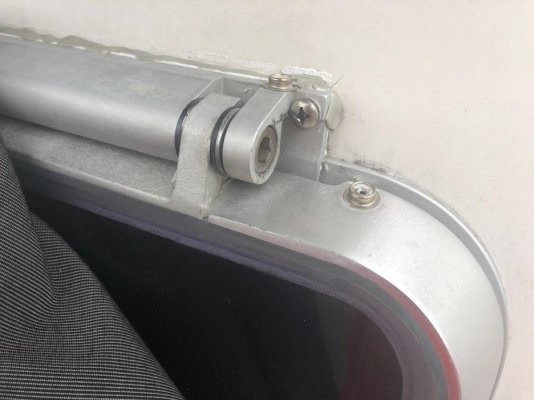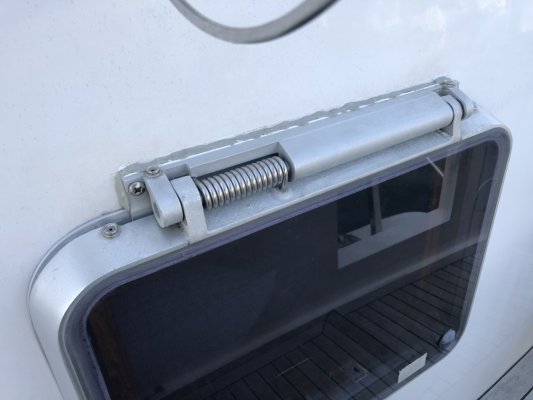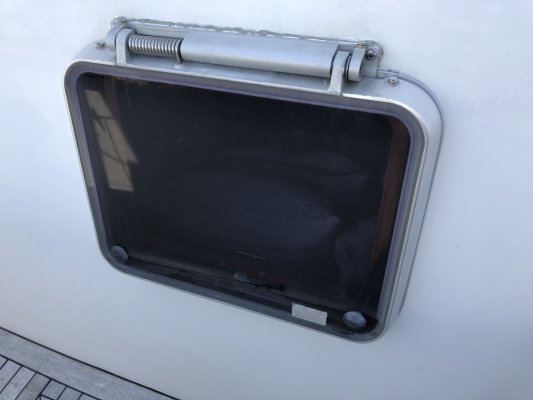stevemitchell
Guru
- Joined
- Sep 25, 2018
- Messages
- 542
- Location
- USA
- Vessel Name
- Aruna
- Vessel Make
- Kristen Yachts 50 Pilot House
I have a hatch/window in my cockpit that recently started misbehaving, and after some investigation, I figured out that it needs some TLC. It is a fairly large window that is the primary opening in my master suite.
What I noticed is that the plate on the top of the window which forms part of the hinge was coming out from the fiberglass when you attempt to close the window. The hinge itself is composed of a very big spring which needed some lubrication, and improved the situation.
After removing the whole assembly, it looks like over the years the previous owners have used progressively larger screws in the corners of the hinge as the force of the hinge caused them to be pulled out.
I can of course continue this trend, although it will require drilling out the hinge holes a bit more, but I suspect this will only buy me another year or two before having to do this again. I also think two larger screws is an inadequate amount for the size of the hinge and spring. I could potentially drill in a third screw hole under the hinge and use that to distribute the amount of force exerted.
I am not going to replace the whole window - it is a pretty custom size from what I can see, and that would require major surgery to change as there is a single massive sheet of teak on the interior side that I don't want to mess with.
What I am interested in is any general tips for dealing with a window/hatch like this. I am aware of how to handle general portholes and hatches having done replacements on all of my previous boats for various sizes. I'm looking for more specific info on this particular type of hatch as I've never worked with one before.
In the pictures below, please ignore the butyl tape I stuffed in the cracks as an emergency sealant since I was out in the middle of nowhere and my tube of 4200 made a quick exit into the depths before I even got to open it!
What I noticed is that the plate on the top of the window which forms part of the hinge was coming out from the fiberglass when you attempt to close the window. The hinge itself is composed of a very big spring which needed some lubrication, and improved the situation.
After removing the whole assembly, it looks like over the years the previous owners have used progressively larger screws in the corners of the hinge as the force of the hinge caused them to be pulled out.
I can of course continue this trend, although it will require drilling out the hinge holes a bit more, but I suspect this will only buy me another year or two before having to do this again. I also think two larger screws is an inadequate amount for the size of the hinge and spring. I could potentially drill in a third screw hole under the hinge and use that to distribute the amount of force exerted.
I am not going to replace the whole window - it is a pretty custom size from what I can see, and that would require major surgery to change as there is a single massive sheet of teak on the interior side that I don't want to mess with.
What I am interested in is any general tips for dealing with a window/hatch like this. I am aware of how to handle general portholes and hatches having done replacements on all of my previous boats for various sizes. I'm looking for more specific info on this particular type of hatch as I've never worked with one before.
In the pictures below, please ignore the butyl tape I stuffed in the cracks as an emergency sealant since I was out in the middle of nowhere and my tube of 4200 made a quick exit into the depths before I even got to open it!







